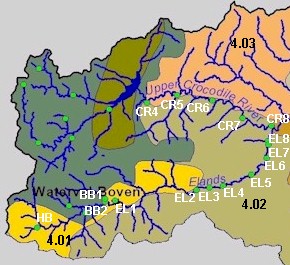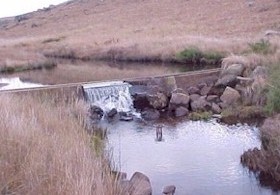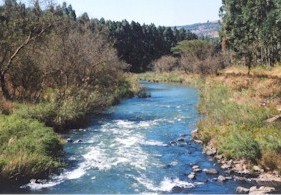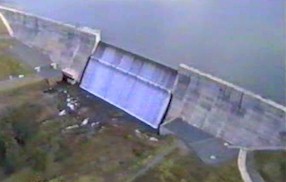| RHP |
South African
River Health Programme |
State of the Rivers Report
Crocodile, Sabie-Sand & Olifants River Systems |












|
|
The Crocodile River System Ecoregion 4.01, 4.02 and 4.03 |
|||||||||
|
Ecoregion and River Characteristics These ecoregions are in the Drakensberg Mountains (1 000 m to 2 000 m above mean sea level) with moderate to high relief and steep slopes. Consequently there is greater variation in mean annual temperature (12-22°C) and mean annual rainfall (600 to 1 200 mm). The geology is more diverse, with the inclusion of some conglomerates and gneiss, and patches of mature soils are found (sometimes leached). Grasslands still dominate, although patches of Afromontane forest are found. |
|||||||||
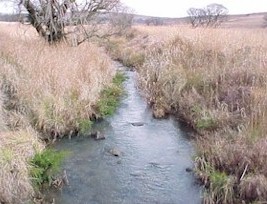
In ecoregion 4.01 the upper half of the Elands River widens to 15 m with rocky pools and a moderate to steep slope. The lower half of the Elands River is a fast flowing section. The river is 15-20 m wide with large rocky pools and abundant riffle and rapid areas in ecoregion 4.02. |
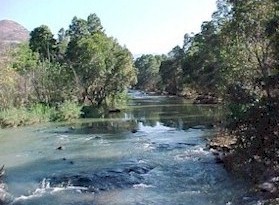
In ecoregion 4.03, downstream of Kwena Dam, the Crocodile River winds through the scenic Schoemanskloof for approximately 55 km to Montrose Falls. In this part the river is 15-20 m wide with large rocky pools interspersed abundantly with riffles and rapids. The river slopes are steep and thick riparian forests cover the riverbank. |
||||||||
| Present Ecological State | |||||||||
|
Ecoregion 4.01: Although the states of in-stream and riparian habitats are good and fair for the Elands River, the fish community still appears to be largely natural . Aquatic invertebrates are in a good state. The overall ecological state for the Hartbeesspruit and Blouboskraalspruit is fair . It is interesting to note that at the time of the initial survey in 1996, riparian vegetation conditions along the Elands River, Hartbeesspruit and Blouboskraalspruit were poor. This state has since improved to fair , which can largely be attributed to the removal of alien plants by the Working for Water Programme. Ecoregion 4.02: Present ecological conditions are good , with the fish community reflecting a natural state and the health of aquatic invertebrates ranging from natural to fair . The riparian habitats and vegetation are less healthy, with poor and fair states respectively. |
Ecoregion 4.03: Good to fair with the in-stream biological components tending to be good and the riparian components (habitat and riparian vegetation) tending to be fair .
|
||||||||
| Drivers of Ecological Change (Land-use activities) | |||||||||
|
|||||||||
|
|||||||||
|
Desired Ecological State and Response by Resource Managers Ecoregion 4.01: It is desirable for the Elands River to be in a good ecological state. The tributaries of the upper part of this ecoregion, above the Waterfall at Waterval Boven, could however, be managed in order to maintain a fair state. Ecoregion 4.02: This section of the Elands River should be maintained in a good state. Restoring of the riparian zone through clearing of alien vegetation is the most important management intervention required. Ecoregion 4.03: The desired ecological state is good . Two aspects require attention, namely 1) management of water releases from Kwena Dam and 2) the overall condition of the riparian zone. Releasing water according to ecological flow requirements will vastly improve the in-stream habitat downstream of Kwena Dam. Clearing of the riparian zone for agricultural as well as for recreational purposes (lodges and guesthouses) must be managed and invasion by alien plants must be controlled.
|
|||||||||





|
|||||||||
